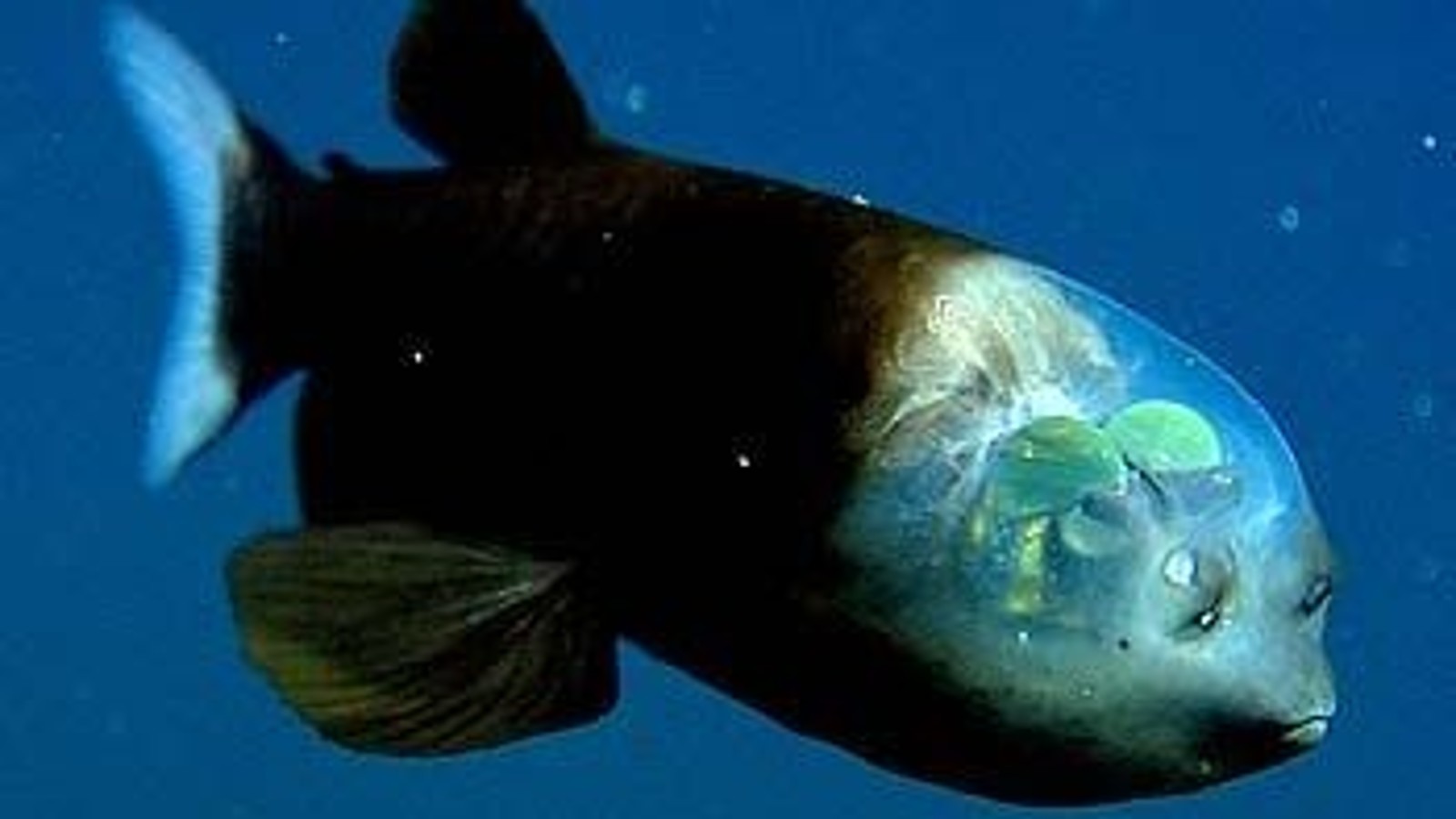Barreleye fish: The deep-sea weirdo with rotating eyes and a see-through head
Thanks to a yellow pigment that filters out sunlight, barreleyes can't be fooled by a common deep-sea camouflage tactic.
Name: Barreleye fish (Macropinna microstoma)
Where it lives: The Bering Sea and North Pacific Ocean, between 2,000 and 2,600 feet (600 and 800 meters) deep
What it eats: Zooplankton and small crustaceans called copepods
Why it's awesome: As their name suggests, barreleye fish have really weird tubular eyes that they can rotate to gaze upward through their transparent foreheads. Although they appear green, the lenses are actually tinted with a yellow pigment that helps these bizarre fish distinguish between sunlight and bioluminescence.
The ocean's twilight zone — the layer of water from 650 to 3,300 feet (200 to 1,000 m) below the surface — receives just enough sunlight for creatures to cast a faint shadow. Their silhouettes are visible to predators lurking below, which is why some deep-sea critters have evolved light-producing organs on their undersides to match the downwelling light. But barreleyes' ocular trick — which works by filtering out sunlight — stops them being fooled by creatures trying to erase their shadows.
This barreleye fish has a transparent head! This fish can actually look up through their own head to see what’s above it. Its tubular eyes help barreleyes both see prey silhouetted against the lighted waters above and what’s in front of them! #FishyFriday pic.twitter.com/JM7bJvZrt8December 17, 2021
Barreleyes hover motionless in the dark until they spot a potential meal passing overhead. They then dart upward to snag it in their mouth and fix their eyes on their prey by rotating them into a forward-looking position.
Get the world’s most fascinating discoveries delivered straight to your inbox.
In 2021, scientists captured footage of one of these rarely seen, deep-sea weirdos in the Monterey Canyon, off the coast of California. They speculated that barreleye fish help themselves to a buffet of crustaceans and larvae that get caught in the tentacles of siphonophores — jellyfish-like organisms that form strings up to 130 feet (40 m) long, according to the Monterey Bay Aquarium.
Barreleyes' transparent helmets may protect them from stinging cells on these tentacles — but this, as well as many other aspects of these creatures' lives, remains uncertain.

Sascha is a U.K.-based staff writer at Live Science. She holds a bachelor’s degree in biology from the University of Southampton in England and a master’s degree in science communication from Imperial College London. Her work has appeared in The Guardian and the health website Zoe. Besides writing, she enjoys playing tennis, bread-making and browsing second-hand shops for hidden gems.



